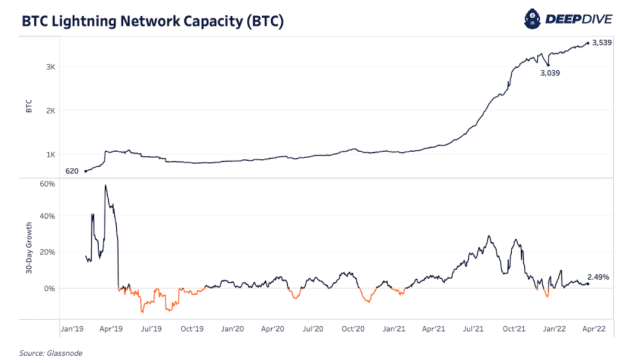Current Lightning Network public channel capacity is at 3,539 bitcoin, and it continues to grow over 30% annualized.
The below is from a recent edition of the Deep Dive, Bitcoin Magazine’s premium markets newsletter. To be among the first to receive these insights and other on-chain bitcoin market analysis straight to your inbox, subscribe now.
“Bitcoin itself cannot scale to have every single financial transaction in the world be broadcast to everyone and included in the block chain. There needs to be a secondary level of payment systems which is lighter weight and more efficient.” – Hal Finney
In today’s Daily Dive we examine the growth of the Bitcoin Lightning Network. The Lightning Network is a decentralized second-layer scaling solution built on top of the Bitcoin network that allows for cheap payments between counterparties. The Lightning Network can essentially be thought of as a bar tab between counterparties, with the opening and closing of the tab serving as the equivalent of an on-chain bitcoin transaction. The proverbial “bar tab” is constructed using a 2-of-2 multisig wallet, which allows for users to take control of their funds in case of a hostile counterparty.
While today’s Daily Dive won’t go much further into the technical mechanics of the Lightning Network, you can find additional information here.
While the Lighting Network does enable private channels between counterparties, the total balance locked in these channels is not public, which is self-explanatory. Thus, in our analysis we will focus on public channel capacity, but it is important to remember that this is not counting the potentially large channels set up between counterparties that are private.
At the time of writing, current public channel capacity is 3,539 BTC. The pane below shows the 30-day growth rate, which displays the Lightning Network’s relentless growth over the previous three years.
Growth was highest in 2021 over the last two years, with the 30-day growth reaching a peak annualized growth rate of nearly 348% in August last year. Since then, growth in public channel capacity has slowed but is still growing over 30% annualized when averaging the growth over the last 30 days.









